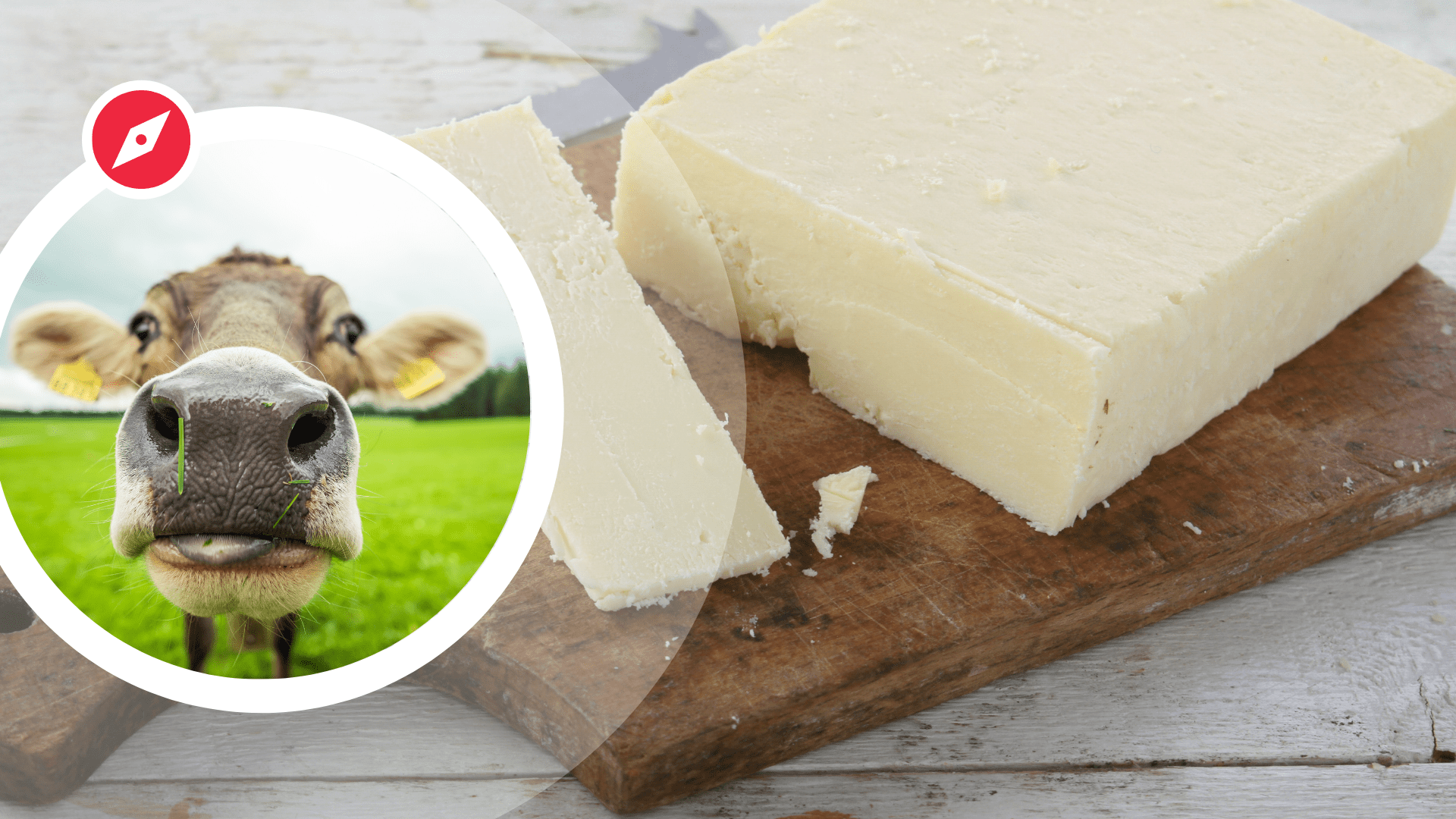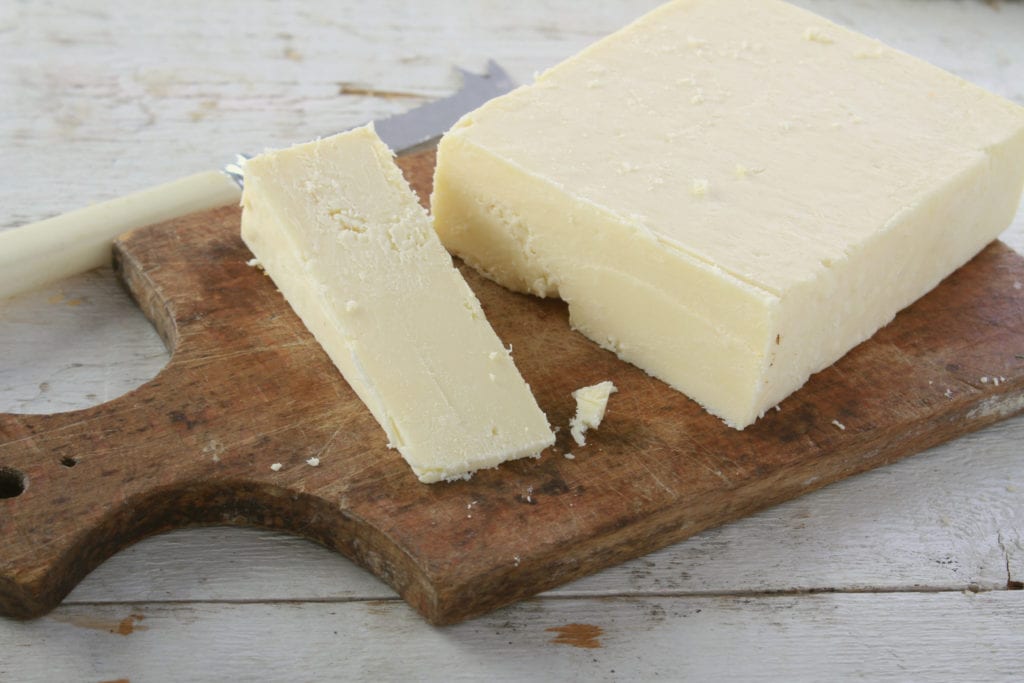Roquefort
What is Tasting Notes How is it made Different styles Compare with other cheeses What does it pair with


Here are six good reasons:
Yes, lots. The Cheshire name is not protected in any way. There is no PDO/Protected Food Name nor is it a trade mark or brand name, so variants are common. Here are some examples of Cheshire variations
Cheshire is a county in England just next to Wales and under Manchester. For nearly two thousand years there has been good grazing combined with local salt mining, making it ideal for cheesemaking. Like many cheeses its name was given by people out of the area associating the style with the county.
The Academy of Cheese is doing a great project on Cheshire with a full history for you to look at, so go over and check it out.
Shape
Rind
Should you eat the rind?
Maybe! For block Cheshire, this is not a question as there is no rind.
For cloth wrapped Cheshire, the rind will be very profoundly different in smell, taste and texture. I have frequently come across Cheshire rinds that have been distinct and delicious, but check first! They can be musty, earthy, farmyard, bitter and more on occasion.
Paste
The paste of the cheese can be experienced in three main stages of age:
Using the tasting notes:
Before you taste the cheese…
| Texture/consistency | Paste | Rind | Comments |
| Texture | 5 | 6 | |
| Consistency | Rubbery crumbly when young, curdy crumbly when older. Very even, with cracks throughout | Firm, dry, dusty | |
| Blueing | None |
| Smell | 2-3, milk and sour milk |
When tasting the cheese
| Mouthfeel | Paste | Rind | Comments |
| Texture | – | – | |
| Wet to dry | – | – |
| Simple flavours | Paste | Rind | Comments |
| Savoury | Broad-spectrum 2-7 | – | Becomes more savoury with age |
| Sweet | Low 2-4 | – | |
| Salt | Broad spectrum: 3-7 | – | |
| Bitter | Can be significant: 3-7 | – | Younger cheese often has a more fruity, chemical or metallic bitterness, older cheeses have more savoury herbaceous bitterness |
| Acid | Always high 5-9 | – |
| Complex Flavours | Likely | Occasional | Rare |
| Dairy | Butter 1-6; yoghurt 1-5 | Milk 1-5; sour milk 1-5; baby sick 1-5 | |
| Fruity or Floral | Lime, lemon or tropical fruit notes 1-6 | Spice, mustard or peppercorn 1- | Flower/floral notes 1-3 |
| Vegetal or herbaceous | Bitter herbs 1-7; alliums (onions, chives, leaks or garlics) 1-6 | Bread, yeast or malt 1-4 | |
| Mineral or chemical | – | Metallic, quinine, rubber or vinegars 1-6 | – |
| Animal, fungal or fermented | Farmyard 1-4 |
Overall assessment
| Complexity | High (7) for older Cheshire, low (3) for younger Cheshire |
| Balance | This is the key to good Cheshire, as it deals with difficult to control flavours. A well balanced Cheshire is a good quality Cheshire. |
| Length | Length can be associated with negative flavours in Cheshires, as the high acid and bitter notes can be the ones that linger. Hence is not a measure of quality in Cheshire. |
| Summary | Cheshire is matured for between 2 and 5 months and so can vary extensively in flavour. They can reach a high level of complexity with butter, yoghurt and milk flavours with accompanying low-level citrus or tropical fruit, alliums and slight meaty, yeasty or bready flavours. Mid textured and crumbly, its acidic and bitter notes can become excessive. |
There are not many producers
I don’t believe there is any non-British cheese equivalent to Cheshire, but no doubt there is somewhere because there always is.
British alternatives:
There are several high acid traditional Crumblies that can be similar to Cheshire, especially if you are looking for sub-3 month substitutes. Wensleydale and Lancashire are two that come closec.
Within the modern British grouping, Anster from St Andrews Farmhouse Cheese Co has similarities.
Lunch, cooking or cheeseboard
All three.
Sweet or savoury tracklement: Jelly, pickle or chutney?
Cheshires like classic British pickles, like whole pickled onions or chopped like real ale chutneys, and sweet mustard pickles like piccalilli. Sweet or fruit confections are usually not so good.
The UK Environmental rules for this kind of cheese are that you can leave it out of the fridge for 2 hours, and then return it to the fridge for normal use. You can leave it out of the fridge between 2 and 4 hours, and then it must be consumed or disposed of. If you leave it out for longer it should be disposed of without eating.
This is very limiting, and most ordinary people are either not aware of the rules or ignore them. Many of my customers over the years leave cheeses out, especially Bries and camemberts to ripen them. As a professional, I can not advise people to do this.
I can say that in my own home I try to find the coolest place in the house to do my final ripening. I am allowed to poison myself.
Larders are best if you have one, with stone, marble or slate shelves, but these are rare now. Some of my customers use their garages, unheated spare rooms, utility rooms or porches. They are trying to represent the producers maturing rooms, which means between 10 and 16oC for final ripening. Above 20oC and you will over-ripen on the outside of the cheese and bring on a smelly rind while possibly still having a chalky centre. Kitchens are NOT good. Today’s kitchens are 21-24oC in temperature, which is too hot for ripening. These customers say 1-2 days is generally plenty. I am told they then put them back in the fridge to slow down the process again until they want to eat it.
Storage
Storage DONTs
Consumption
Bring to room temperature before consuming, this means 20-23oC in most houses. An hour should be plenty for wedges, for large pieces leave a little longer.
The Academy of Cheese is doing a great project on Cheshire with a full history for you to look at, so go over and check it out.
Here are my two golden rules:
Is Cheshire suitable for pregnant and immunity fragile people? If you dont know them i always point people to the NHS guidelines https://www.nhs.uk/conditions/pregnancy-and-baby/foods-to-avoid-pregnant/
What is Tasting Notes How is it made Different styles Compare with other cheeses What does it pair with
What is History of Camembert de Normandie Origins and Development Camembert de Normandie, a renowned French cheese, originates from the Normandy region
What is Origins and Development Traditional Methods Age Profiles of Pecorino Sardo Varieties Flavor and Texture Pecorino Sardo in America Introduction and